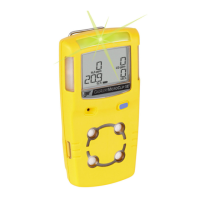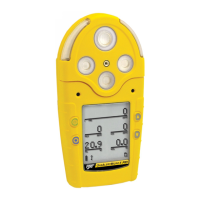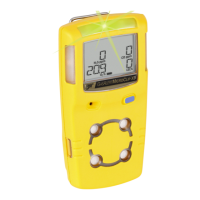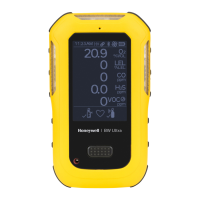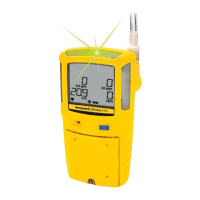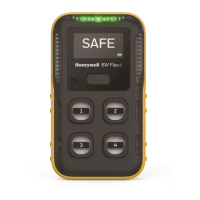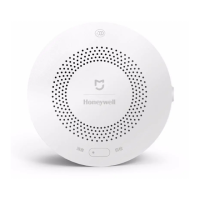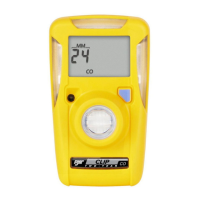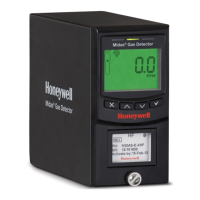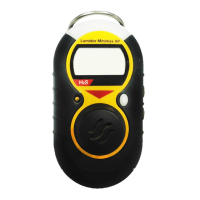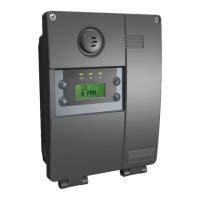Do you have a question about the Honeywell BW GasAlertMicro 5 and is the answer not in the manual?
Overview of the GasAlertMicro 5/PID/IR detector and its purpose.
Lists the specific gases the detector is designed to monitor and their units.
Essential safety warnings, cautions, and guidelines for operating the detector.
Outlines the standard items included with the detector and initial setup.
Describes the physical parts of the detector, screen elements, and buttons.
Step-by-step instructions for turning the detector on and off.
Accessing and navigating the detector's user-configurable settings.
Configuring display backlight behavior and audible confidence beeps.
Setting up device lockout features for calibration and unauthorized access.
Settings related to individual gas sensors, including enabling/disabling.
Procedures for enabling or disabling specific gas sensors on the detector.
Setting the concentration value for calibration gas for accurate readings.
Accessing advanced technical functions and settings for authorized personnel.
Explains the different types of alarms and their visual/audible indicators.
Step-by-step guide for performing a bump test to confirm sensor response.
Detailed process for calibrating sensors and adjusting alarm thresholds.
How the detector performs self-tests for auto-zero and auto-span.
Procedures for verifying calibration accuracy and troubleshooting span failures.
Information on the pump module, its types, and usage.
Instructions for attaching and replacing the detector's pump module.
Overview of data logging capabilities, recorded information, and card management.
Instructions for inserting, removing, and troubleshooting the MMC/SD card.
Essential steps for keeping the detector in good operating condition.
Guidelines and procedures for safely handling and replacing batteries.
Procedures for cleaning or replacing sensors and the PID lamp.
Solutions for common problems encountered with the detector's operation.
Technical details, operating conditions, and performance characteristics of the detector.
| Model | BW GasAlertMicro 5 |
|---|---|
| Gases Detected | O2, CO, H2S, LEL |
| Detection Range (H2S) | 0-100 ppm |
| Detection Range (LEL) | 0-100% LEL |
| Resolution (O2) | 0.1% Vol. |
| Resolution (CO) | 1 ppm |
| Resolution (H2S) | 1 ppm |
| Resolution (LEL) | 1% LEL |
| Display | LCD |
| Battery Life (Alkaline) | 20 hours |
| Alarms | Visual, audible, and vibrating |
| Detection Range (O2) | 0-30% vol |
| Detection Range (CO) | 0 to 1000 ppm |
| Battery Type | Rechargeable or Alkaline |
| Operating Temperature | -20°C to 50°C (-4°F to 122°F) |
| Humidity | 0 to 95% RH |
| Calibration | Automatic |
| Certifications | ATEX, CSA, IECEx |
